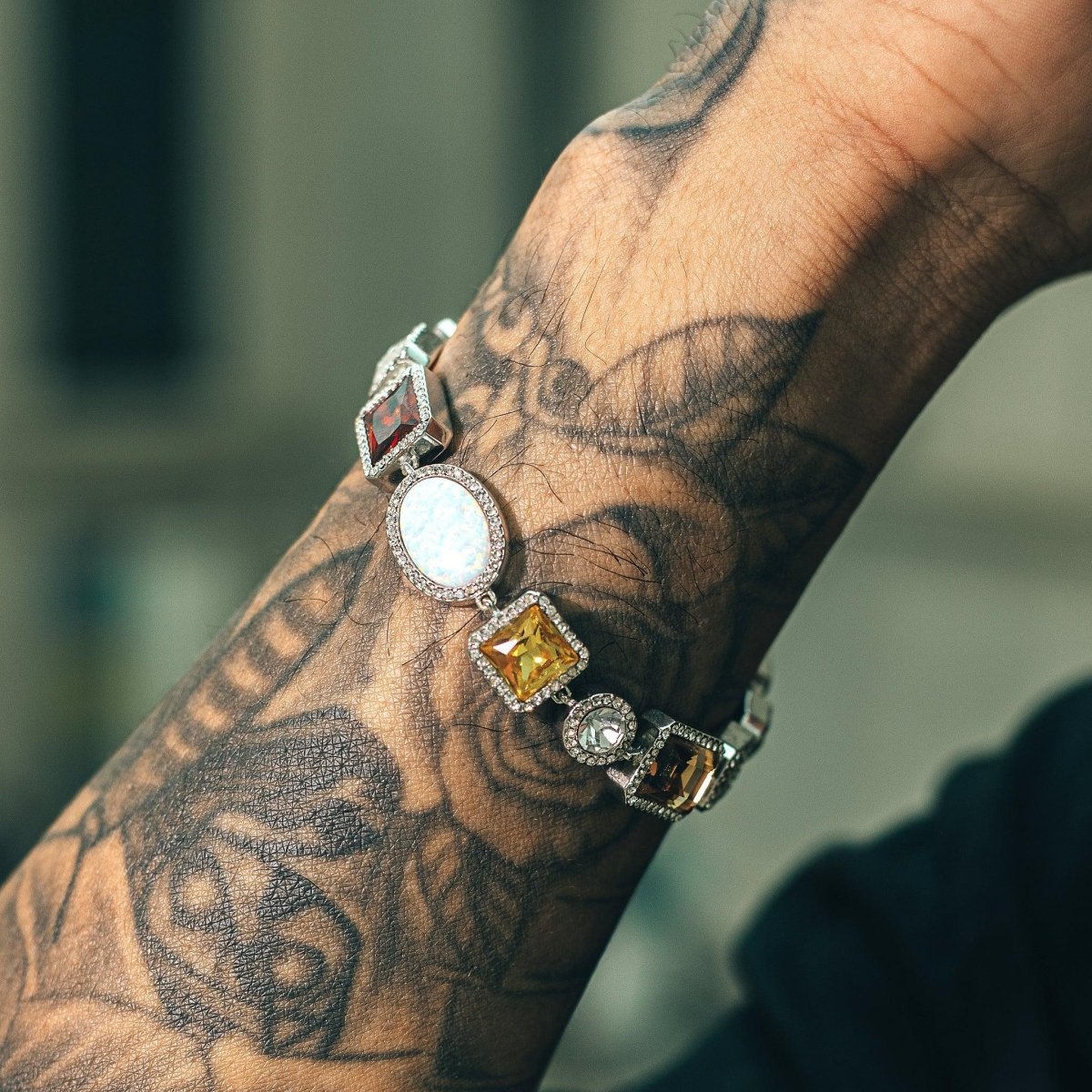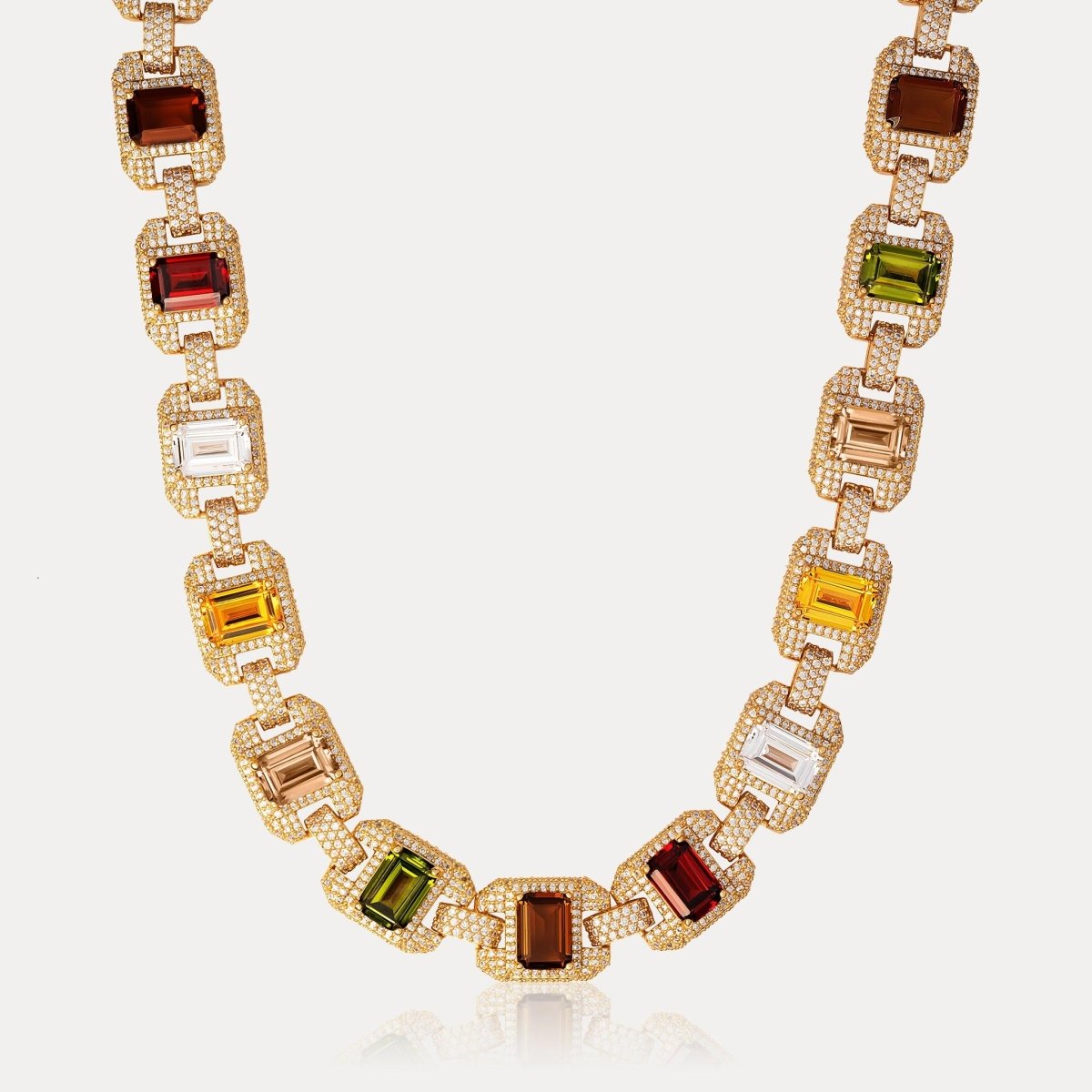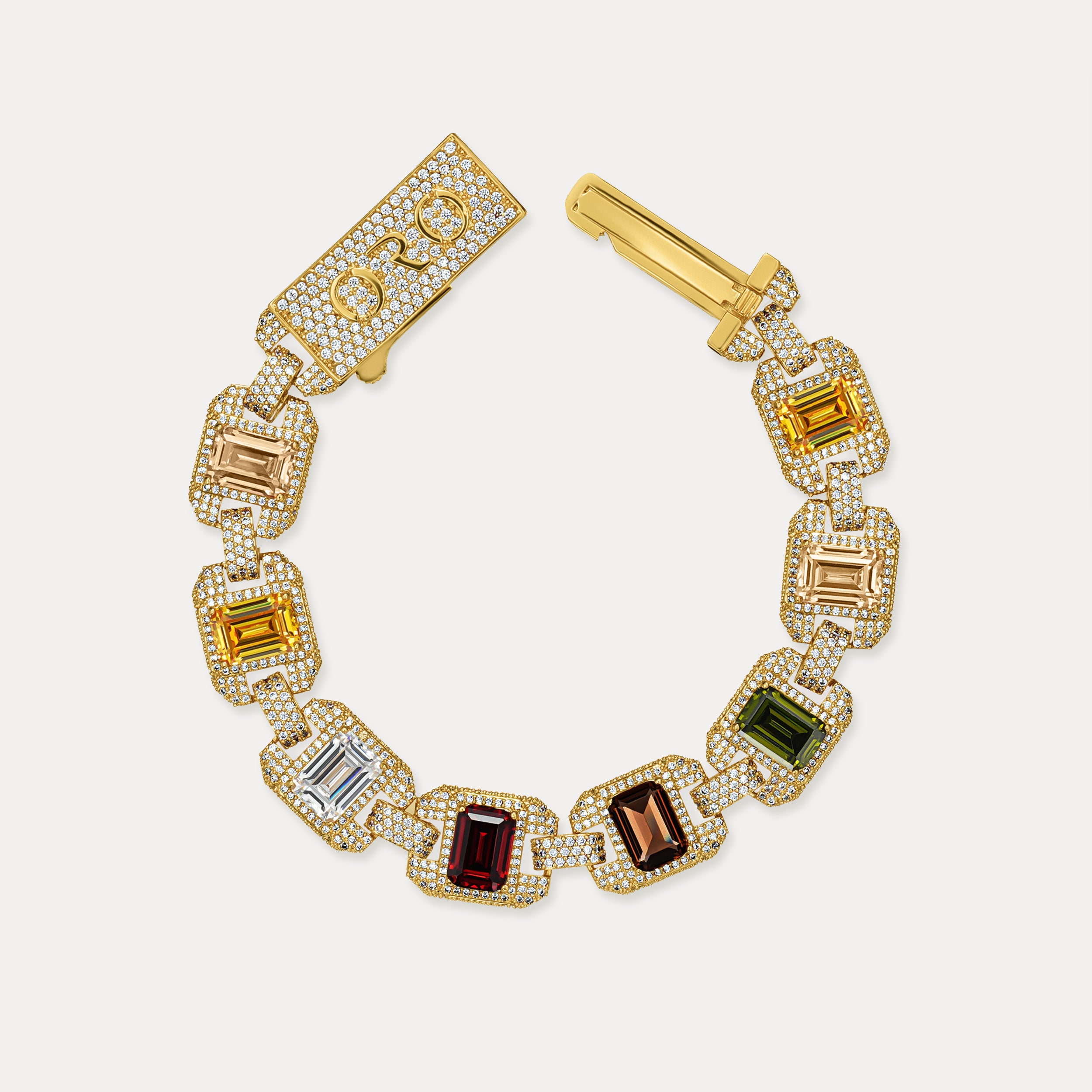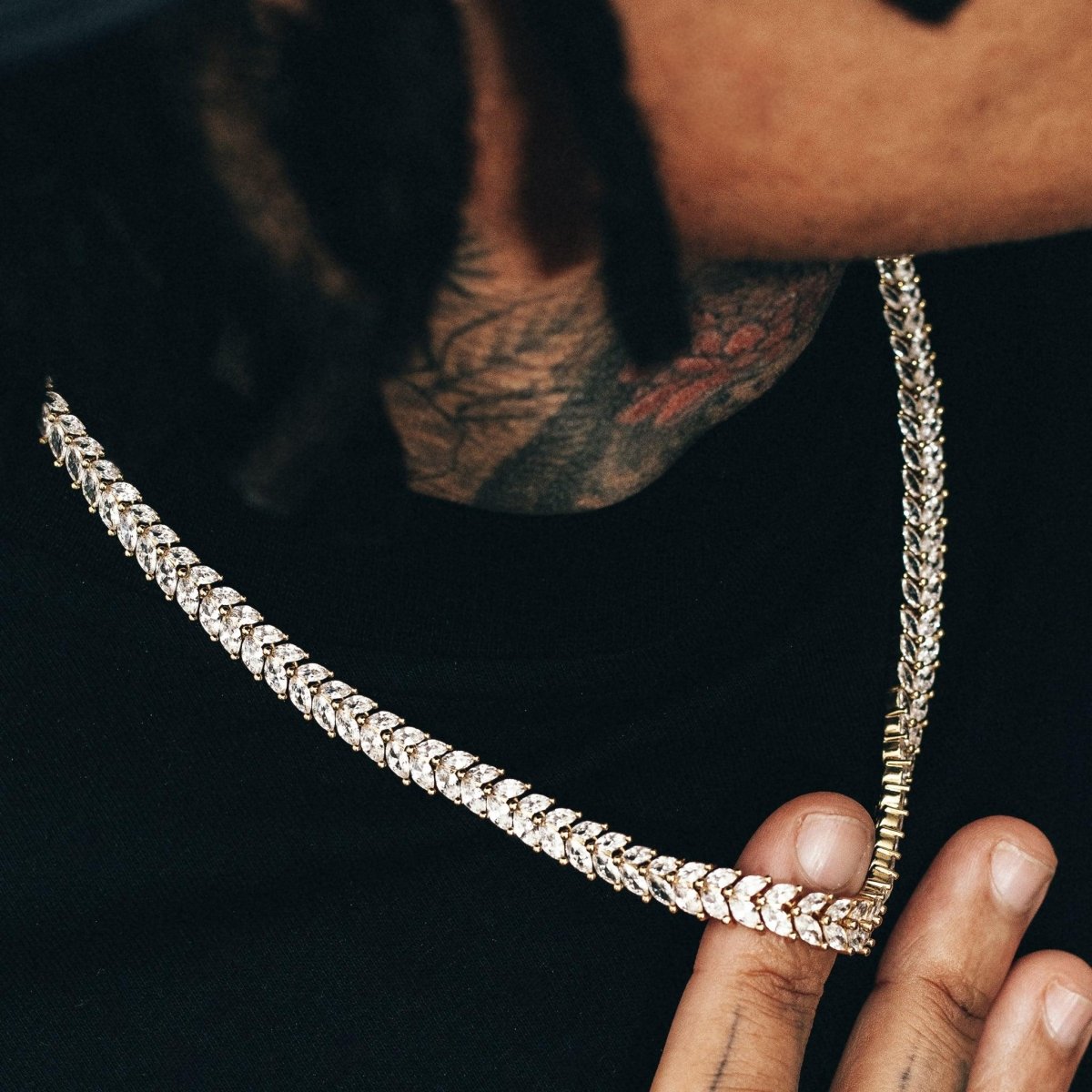Is gold-plated real gold? Everything you need to know
Gold-plated items are a popular choice for those who want the look of gold without the high price tag. But is gold-plated real gold? In this article, we will explore the basics of gold-plating, the composition of gold-plated items, and the differences between gold-plated and solid gold. We will also discuss the pros and cons of gold-plated items and provide tips on how to care for them. Read on to learn everything you need to know about gold-plated items.
Key Takeaways
- Gold-plated items are made by coating a base metal with a thin layer of gold.
- Gold-plated items are not considered real gold, as the gold layer is very thin.
- Gold-plated items may tarnish or wear off over time.
- Determining the gold content of gold-plated items can be challenging.
- Gold-plated items require special care to maintain their appearance.
What is Gold-Plated?
Understanding the Basics of Gold-Plating
Gold-plating is a process where a thin layer of gold is applied to the surface of another metal. This is done through electroplating, which involves using an electric current to deposit the gold onto the metal. The purpose of gold-plating is to give the item the appearance of being made entirely of gold, without the high cost associated with solid gold. It is important to note that gold-plated items are not made entirely of gold; they are composed of a base metal with a thin layer of gold on the surface.
Gold-plating can be done on various metals, including silver, brass, and stainless steel. The thickness of the gold layer can vary, but it is typically very thin, ranging from 0.5 to 2.5 microns. The quality of the gold-plating can also vary, with some items having a higher gold content than others. It is important to consider these factors when determining the value and durability of a gold-plated item.
How Gold-Plating is Done
Gold-plating is a process that involves depositing a thin layer of gold onto the surface of another metal. This is typically done through a technique called electroplating, where an electric current is used to transfer the gold ions onto the metal. The metal object to be gold-plated is first cleaned and prepared to ensure proper adhesion of the gold layer.
Once the object is ready, it is submerged in a solution containing gold ions. The positive charge of the gold ions attracts them to the negatively charged metal object, causing the gold to bond with the surface. The longer the object remains in the solution, the thicker the gold layer becomes.
It's important to note that the thickness of the gold layer can vary depending on the desired result. Some gold-plated items may have a very thin layer of gold, while others may have a thicker layer for increased durability and longevity.
Gold-plating can be done on various metals, including silver, brass, and stainless steel. Each metal requires specific preparation and plating techniques to ensure a successful gold-plating process.
Different Types of Gold-Plating
When it comes to gold-plating, there are several different types to choose from. Each type offers its own unique characteristics and benefits. Here are some of the most common types of gold-plating:
-
Flash Gold-Plating: This type of gold-plating involves a thin layer of gold being applied to the surface of an item. It is commonly used in the electronics industry to improve conductivity and prevent corrosion.
-
Gold Vermeil: Gold vermeil is a type of gold-plating that uses a thicker layer of gold compared to flash gold-plating. It is often used in jewelry and is known for its durability and long-lasting shine.
-
Gold Filled: Gold-filled items have a thicker layer of gold compared to gold-plated items. The gold layer is bonded to a base metal, usually brass or copper. This type of gold-plating is more durable and resistant to tarnishing.
-
Gold Overlay: Gold overlay is similar to gold-filled, but the gold layer is typically thinner. It is a more affordable option compared to solid gold, while still offering a similar appearance.
Is Gold-Plated Real Gold?
The Composition of Gold-Plated Items
Gold-plated items are made by applying a thin layer of gold onto the surface of a base metal. The base metal can be a variety of materials, such as copper, brass, or silver. The gold layer is typically measured in microns, with thicker layers providing better durability. The composition of gold-plated items can vary depending on the quality and thickness of the gold layer.
Gold-plated jewelry, for example, often has a base metal core that is then coated with a layer of gold. The gold layer can range from 10k to 24k, with higher karat gold providing a richer and more vibrant color. It's important to note that gold-plated items are not solid gold throughout, but rather have a thin layer of gold on the surface.
When purchasing gold-plated items, it's essential to consider the thickness of the gold layer and the quality of the base metal. Thicker gold layers tend to be more resistant to wear and fading, while higher quality base metals can prevent allergic reactions and skin irritation. It's also important to understand that the gold layer on gold-plated items can wear off over time with regular use and exposure to chemicals or friction. Proper care and maintenance can help prolong the lifespan of gold-plated items and maintain their appearance.
Differences Between Gold-Plated and Solid Gold
When comparing gold-plated items to solid gold, there are several key differences to consider:
-
Durability: Solid gold is generally more durable than gold-plated items, as the gold layer on gold-plated items can wear off over time.
-
Value: Solid gold has a higher intrinsic value than gold-plated items, as it contains a higher percentage of gold.
-
Cost: Gold-plated items are typically more affordable than solid gold, making them a popular choice for those on a budget.
-
Appearance: While gold-plated items can have a similar appearance to solid gold, they may not have the same luster and shine.
-
Maintenance: Gold-plated items require more maintenance and care to preserve their appearance, as the gold layer can tarnish or fade with time.
-
Hypoallergenic: Solid gold is generally hypoallergenic, while gold-plated items may contain other metals that can cause allergic reactions in some individuals.
-
Longevity: Solid gold items can last a lifetime with proper care, while gold-plated items may need to be re-plated over time.
Determining the Gold Content of Gold-Plated Items
Determining the gold content of gold-plated items can be a bit challenging, as the gold layer is usually very thin. One way to estimate the gold content is by conducting an acid test. This involves applying a small amount of acid to the item and observing the reaction. If the gold layer is thick enough, the acid will not affect it, indicating a higher gold content. However, it's important to note that this method is not always accurate and may damage the item.
Another method is using an X-ray fluorescence (XRF) analyzer, which can provide a more precise measurement of the gold content. This non-destructive technique uses X-rays to determine the elemental composition of the item, including the gold content. XRF analyzers are commonly used by professionals in the jewelry industry.
It's worth mentioning that determining the gold content of gold-plated items is not always necessary for everyday consumers. If you're simply looking for a stylish and affordable piece of jewelry, the gold-plated option can be a great choice without worrying too much about the exact gold content.
Pros and Cons of Gold-Plated Items
Advantages of Gold-Plated Items
Gold-plated items offer several advantages over solid gold. Here are some key benefits:
-
Affordability: Gold-plated items are more affordable compared to solid gold. This makes them a great option for those who want the look of gold without the high price tag.
-
Variety: Gold-plated items come in a wide range of designs and styles. Whether you prefer a classic or modern look, you can find gold-plated jewelry and accessories to suit your taste.
-
Durability: Gold-plated items are generally more durable than solid gold. The base metal used in gold-plating provides strength and resilience, making the item less prone to scratches and damage.
-
Versatility: Gold-plated items can be worn or used in various settings. Whether you're attending a formal event or going for a casual look, gold-plated jewelry and accessories can complement any outfit.
-
Hypoallergenic: Many gold-plated items are hypoallergenic, making them suitable for individuals with sensitive skin. The gold plating acts as a protective barrier, reducing the risk of skin irritation.
Remember, while gold-plated items offer these advantages, it's important to understand their limitations and care for them properly to maintain their appearance and longevity.
Disadvantages of Gold-Plated Items
Gold-plated items have several disadvantages that you should be aware of:
-
Limited Durability: While gold-plated items may look beautiful initially, the gold layer can wear off over time, revealing the base metal underneath. This can result in a less attractive appearance and may require re-plating to maintain the desired look.
-
Allergic Reactions: Some people may experience allergic reactions to the base metal used in gold-plated items. This can cause skin irritation, redness, and discomfort. It's important to be cautious if you have sensitive skin.
-
Not as Valuable as Solid Gold: Gold-plated items do not hold the same value as solid gold. The gold layer is typically very thin and does not contribute significantly to the item's overall worth. If you're looking for an investment or a valuable piece of jewelry, solid gold is a better option.
-
Limited Repair Options: If a gold-plated item gets damaged, the repair options are often limited. Unlike solid gold, which can be easily repaired or resized, gold-plated items may not be able to undergo extensive repairs without damaging the underlying base metal.
When to Choose Gold-Plated Items
When considering whether to choose gold-plated items, there are a few factors to keep in mind:
-
Budget-friendly: Gold-plated items are a more affordable alternative to solid gold, making them a great option for those on a budget.
-
Versatility: Gold-plated items can be found in a wide range of styles and designs, making it easier to find something that suits your personal taste.
-
Fashion-forward: Gold-plated items are often on-trend and can help you stay up-to-date with the latest fashion trends.
-
Occasional wear: Gold-plated items are perfect for special occasions or events where you want to add a touch of elegance without breaking the bank.
-
Gift-giving: Gold-plated items make for thoughtful and stylish gifts that are sure to impress.
When it comes to choosing gold-plated items, it's important to consider your personal style, budget, and the occasion for which you'll be wearing the item.
Caring for Gold-Plated Items
Cleaning and Maintenance Tips
When it comes to cleaning and maintaining gold-plated items, it's important to use gentle methods to avoid damaging the delicate layer of gold. Here are some tips to keep your gold-plated items looking their best:
-
Use a soft, non-abrasive cloth to gently wipe the surface of the item. Avoid using harsh chemicals or abrasive materials that can scratch or remove the gold plating.
-
Avoid exposing gold-plated items to water for extended periods of time, as moisture can cause the gold plating to tarnish or wear off. Remove your gold-plated jewelry before swimming or showering.
-
Store your gold-plated items separately from other jewelry to prevent scratching. Consider using a soft pouch or jewelry box with individual compartments.
-
Avoid exposing gold-plated items to excessive heat or direct sunlight, as this can cause the gold plating to fade or discolor.
Remember, proper care and maintenance will help prolong the lifespan of your gold-plated items and keep them looking beautiful.
Avoiding Damage to Gold-Plated Items
To ensure the longevity of your gold-plated items, it is important to take proper care of them. Here are some tips to avoid damaging your gold-plated items:
-
Avoid exposing your gold-plated items to harsh chemicals such as bleach, ammonia, or cleaning solutions that contain abrasives. These chemicals can strip away the gold plating and cause damage.
-
Remove your gold-plated items before engaging in activities that may cause friction or scratching, such as sports or household chores. This will help prevent the gold plating from wearing off.
-
Store your gold-plated items separately from other jewelry to prevent scratching. Consider using individual jewelry pouches or soft cloth bags for each item.
-
Avoid wearing your gold-plated items in water, especially chlorinated water. Water can cause the gold plating to tarnish or fade over time.
Remember, proper care and maintenance will help preserve the beauty and shine of your gold-plated items for years to come.
Storing Gold-Plated Items Properly
When it comes to storing gold-plated items, proper care is essential to maintain their appearance and longevity. Here are some tips to help you store your gold-plated items:
-
Keep them separate: Store gold-plated items separately from other jewelry to prevent scratching and damage.
-
Use a soft cloth: Wrap your gold-plated items in a soft cloth or tissue paper to protect them from dust and moisture.
-
Avoid exposure to chemicals: Keep your gold-plated items away from harsh chemicals, such as perfumes, lotions, and cleaning products, as they can cause discoloration.
-
Store in a cool, dry place: Choose a storage area that is cool and dry to prevent tarnishing and oxidation.
Remember, proper storage is key to preserving the beauty and shine of your gold-plated items.
Conclusion
In conclusion, while gold-plated items may have a thin layer of real gold, they are not considered to be made entirely of gold. The plating process involves applying a layer of gold onto a base metal, which can be a more affordable alternative to solid gold. It is important to understand the difference between gold-plated and solid gold items when making purchasing decisions. Gold-plated items can still provide a luxurious appearance, but they may require more care and maintenance to preserve their gold layer.
Frequently Asked Questions
Is gold-plated real gold?
Gold-plated items are not made entirely of gold. They are made of a base metal, such as copper or brass, that is coated with a thin layer of gold.
How long does gold-plating last?
The lifespan of gold-plating depends on various factors, including the thickness of the gold layer, the quality of the base metal, and how the item is used and cared for. Generally, gold-plating can last for several months to a few years with proper care.
Can gold-plated jewelry tarnish?
Yes, gold-plated jewelry can tarnish over time. The base metal can react with moisture, air, and chemicals, causing the gold layer to fade or discolor. Proper cleaning and maintenance can help slow down the tarnishing process.
Can I shower with gold-plated jewelry?
It is generally not recommended to shower with gold-plated jewelry. The exposure to water, soap, and shampoo can accelerate the tarnishing process and reduce the lifespan of the gold-plating. It is best to remove gold-plated jewelry before showering or swimming.
Can I wear gold-plated jewelry every day?
While you can wear gold-plated jewelry every day, it is important to note that the gold layer may wear off over time, especially with frequent friction and contact with surfaces. To prolong the lifespan of gold-plated jewelry, it is advisable to remove it before engaging in activities that may cause excessive wear and tear.
How do I clean gold-plated items?
To clean gold-plated items, use a soft cloth or brush to gently remove dirt and debris. Avoid using abrasive materials or harsh chemicals that can damage the gold layer. You can also use a mild soap and water solution to clean the items. After cleaning, make sure to dry the items thoroughly to prevent moisture from causing tarnishing.
Best Sellers



















































1 comment
I hope this message finds you well. I wanted to take a moment to express how much my sons adore your jewelry, and I am excited to be gifting him one of your chains for Christmas. I truly appreciate the quality of your craftsmanship.
However, I have noticed that many of the items are described as “gold” or “silver finished.” Could you please elaborate on what this terminology means? I see that the word “plated” is not used, but I want to clarify if this implies that the chain is not solid gold.
Thank you for your time and assistance. I look forward to your response.
Best regards,
Mr.B
Mr.B
Leave a comment
This site is protected by hCaptcha and the hCaptcha Privacy Policy and Terms of Service apply.